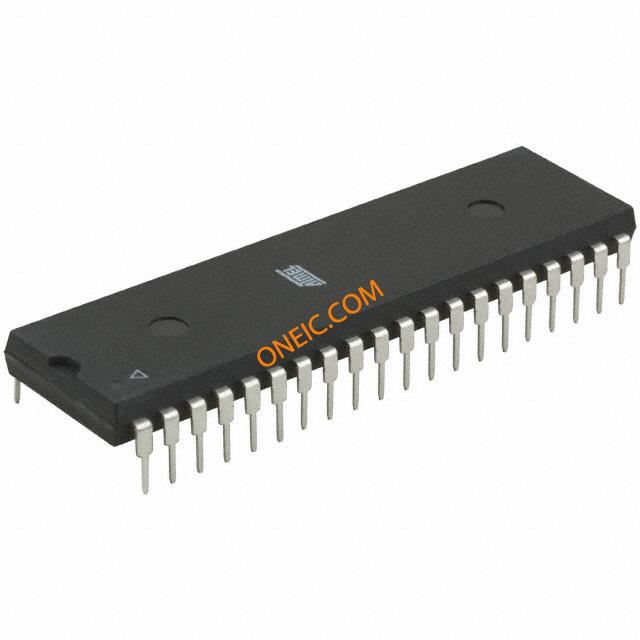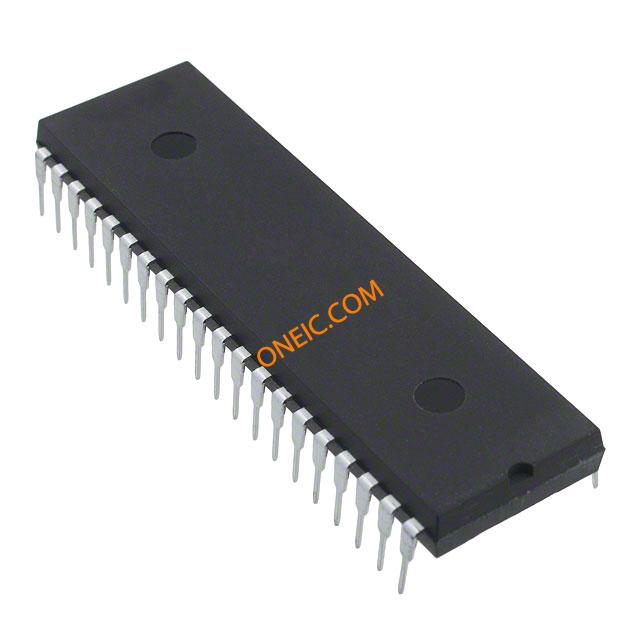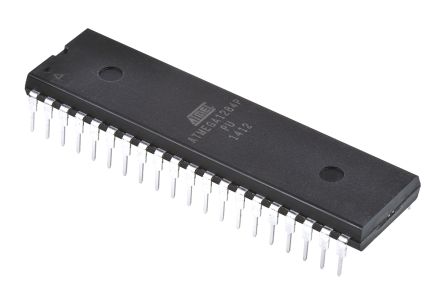ATMEGA1284P-PU
8-bit AVR microcontrollers with 128KB Flash, 16KB RAM, 40-pin PDIP
Manufacturer: ['microchip', 'atmel']
series introduction
# ATMEGA1284P - PU Product Series Introduction
## 1. Overview
The ATMEGA1284P - PU is a high - performance, low - power 8 - bit AVR® microcontroller from Microchip Technology. It belongs to the AVR family, which is well - known for its rich set of features, ease of use, and wide range of applications. This product series is designed to meet the requirements of various embedded systems, offering a balance between processing power, memory, and peripheral functionality.
## 2. Key Features
### 2.1 Processor Core
- **AVR RISC Architecture**: The ATMEGA1284P - PU is based on the AVR Reduced Instruction Set Computer (RISC) architecture. This architecture allows for efficient execution of instructions, with most instructions being executed in a single clock cycle. As a result, it can achieve a throughput of up to 1 MIPS per MHz, enabling it to handle complex tasks quickly and efficiently.
- **Harvard Architecture**: It uses the Harvard architecture, which separates the program memory and data memory. This allows for simultaneous access to program and data, enhancing the overall performance of the microcontroller.
### 2.2 Memory
- **Flash Memory**: It comes with 128 KB of in - system self - programmable Flash program memory. This large amount of Flash memory can store complex application code, making it suitable for applications that require a significant amount of program storage, such as industrial control systems and smart home devices.
- **SRAM**: The microcontroller has 16 KB of internal Static Random - Access Memory (SRAM). SRAM is used for storing variables and data during program execution. The relatively large SRAM size allows for the handling of larger data buffers and more complex algorithms.
- **EEPROM**: There is also 4 KB of Electrically Erasable Programmable Read - Only Memory (EEPROM). EEPROM is non - volatile memory, which means it retains its data even when the power is turned off. It is commonly used for storing configuration data, calibration values, and other important information that needs to be preserved.
### 2.3 Peripherals
#### 2.3.1 I/O Ports
- The ATMEGA1284P - PU has four 8 - bit I/O ports (Port A, Port B, Port C, and Port D). These ports can be configured as either input or output ports, providing flexibility for connecting external devices such as sensors, actuators, and displays. Each pin of the I/O ports can be individually controlled, allowing for precise control of external hardware.
#### 2.3.2 Timers/Counters
- It features three timers/counters: two 8 - bit timers/counters (Timer/Counter0 and Timer/Counter2) and one 16 - bit timer/counter (Timer/Counter1). These timers/counters can be used for a variety of purposes, such as generating accurate time delays, measuring time intervals, and generating Pulse Width Modulation (PWM) signals. PWM signals are commonly used for controlling the speed of motors, adjusting the brightness of LEDs, and other applications that require variable power control.
#### 2.3.3 Serial Communication Interfaces
- **USART**: The microcontroller is equipped with two Universal Synchronous/Asynchronous Receiver/Transmitter (USART) interfaces. USARTs are used for serial communication with other devices, such as computers, sensors, and other microcontrollers. They support both synchronous and asynchronous communication modes, allowing for flexible data transfer.
- **SPI**: It also has a Serial Peripheral Interface (SPI). SPI is a high - speed serial communication protocol that is commonly used for communicating with external devices such as flash memories, sensors, and displays. It allows
Images for reference

40-DIP Pkg

40-DIP

Image Preview